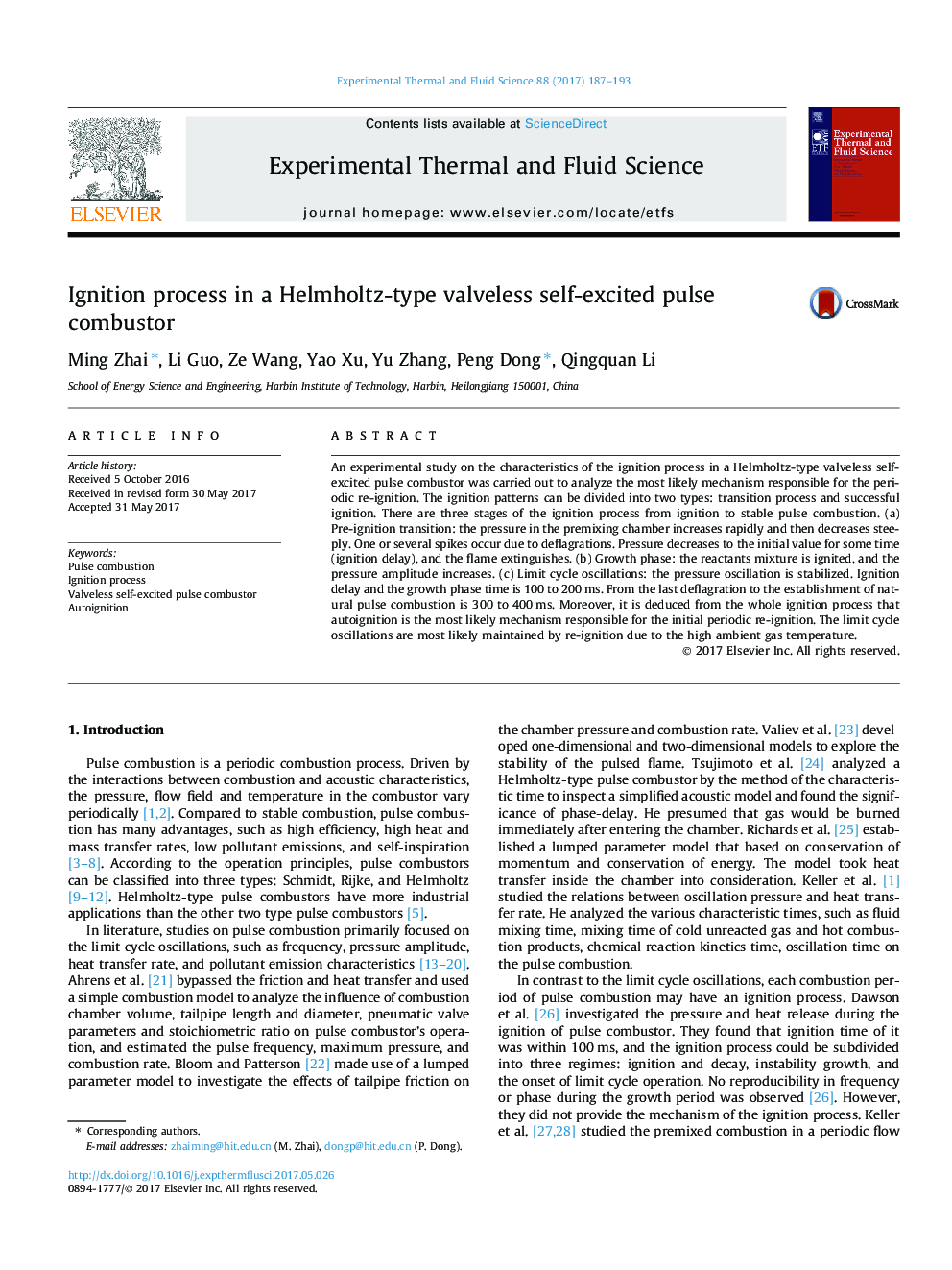| کد مقاله | کد نشریه | سال انتشار | مقاله انگلیسی | نسخه تمام متن |
|---|---|---|---|---|
| 4992577 | 1457388 | 2017 | 7 صفحه PDF | دانلود رایگان |
عنوان انگلیسی مقاله ISI
Ignition process in a Helmholtz-type valveless self-excited pulse combustor
دانلود مقاله + سفارش ترجمه
دانلود مقاله ISI انگلیسی
رایگان برای ایرانیان
کلمات کلیدی
موضوعات مرتبط
مهندسی و علوم پایه
مهندسی شیمی
جریان سیال و فرایندهای انتقال
پیش نمایش صفحه اول مقاله

چکیده انگلیسی
An experimental study on the characteristics of the ignition process in a Helmholtz-type valveless self-excited pulse combustor was carried out to analyze the most likely mechanism responsible for the periodic re-ignition. The ignition patterns can be divided into two types: transition process and successful ignition. There are three stages of the ignition process from ignition to stable pulse combustion. (a) Pre-ignition transition: the pressure in the premixing chamber increases rapidly and then decreases steeply. One or several spikes occur due to deflagrations. Pressure decreases to the initial value for some time (ignition delay), and the flame extinguishes. (b) Growth phase: the reactants mixture is ignited, and the pressure amplitude increases. (c) Limit cycle oscillations: the pressure oscillation is stabilized. Ignition delay and the growth phase time is 100 to 200Â ms. From the last deflagration to the establishment of natural pulse combustion is 300 to 400Â ms. Moreover, it is deduced from the whole ignition process that autoignition is the most likely mechanism responsible for the initial periodic re-ignition. The limit cycle oscillations are most likely maintained by re-ignition due to the high ambient gas temperature.
ناشر
Database: Elsevier - ScienceDirect (ساینس دایرکت)
Journal: Experimental Thermal and Fluid Science - Volume 88, November 2017, Pages 187-193
Journal: Experimental Thermal and Fluid Science - Volume 88, November 2017, Pages 187-193
نویسندگان
Ming Zhai, Li Guo, Ze Wang, Yao Xu, Yu Zhang, Peng Dong, Qingquan Li,